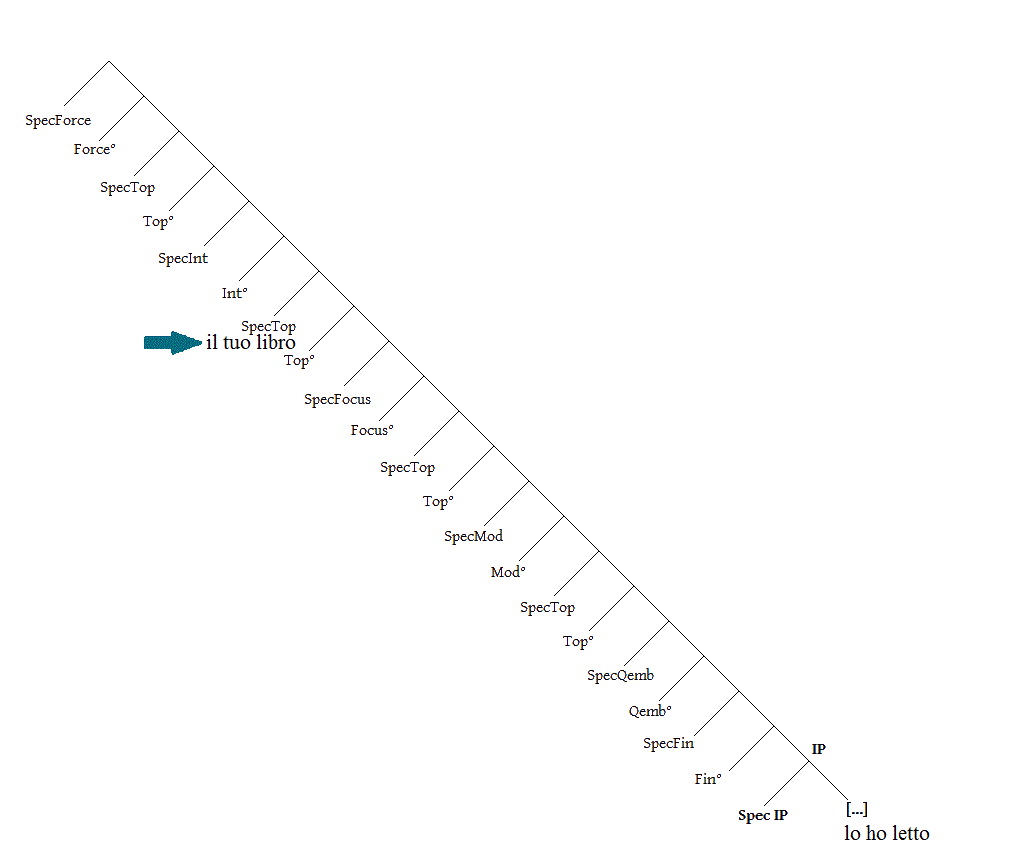Topic Phrase (TopP)
♦ Topic has first been defined as “a preposed element characteristically set off from the rest of the clause by 'comma intonation' and normally expressing old information somehow available and salient in previous discourse" (Rizzi 1997: 285; Frascarelli & Hinterhoelzl 2007; Bianchi & Frascarelli 2010 for more recent further refinements)
♦ Within a configuration Spec - head – complement, the head of the functional projection is a Top head (overtly realized in natural languages of the world, see here), the fronted phrase is in Spec position and the complement constitutes a comment on that topic. Topic head attracts elements in the clause bearing a +Top feature.
♦ In languages like Italian (1a), Topics are typically present in Clitic Left Dislocation structures (ClLD), in which a clitic resumptive pronoun is present in the clause following the topic and predicating some property of it (1a); in other languages such as, e.g. English (1b), a gap is present in the position in which the fronted topic is first merged:
(1) a. Il tuo libro, lo ho letto
Your book I read it.
(Italian, Rizzi 1997: 286; 3)
b. Your book, I bought yesterday
(English, Rizzi 2013: 214; 36b)
♦ Topics can be iterated in the CP at least in Romance, illustrated with Italian in (2). Various analyses have proposed distinct topic positions for different types of topics (Frascarelli & Hinterhoelzl 2007, Bianchi & Frascarelli 2010 see here).
(2) L’anno prossimo, in questo modo, le elezioni, senza troppe difficolta, a Gianni, potreste fargliele vincere
‘Next year, in this way, the elections, without trouble, (to) Gianni, you could make (to) him win them’
(Italian, Rizzi 2004: 246; 66)
Main References: Rizzi L. (1997), Rizzi L. (2004), Rizzi L. (2013)

